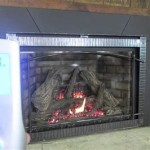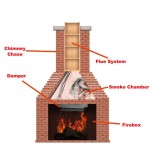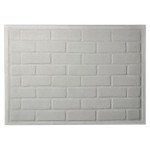How to Hide TV Wires Above a Fireplace
Mounting a television above a fireplace offers a visually appealing focal point in a living space. However, exposed wires can detract significantly from the polished aesthetic. Successfully concealing these wires requires careful planning, proper tools, and an understanding of both electrical codes and structural considerations. This article details the various methods for hiding TV wires above a fireplace, outlining the pros and cons of each approach.
Understanding the Challenges
Hiding TV wires above a fireplace presents unique challenges compared to concealing them on a standard wall. The presence of the fireplace itself, along with associated heat and building materials, necessitates careful consideration. Heat from the fireplace can damage certain types of wiring if they are not properly insulated or shielded. Furthermore, the materials used to construct the fireplace, such as brick, stone, or concrete, require specialized drilling and wiring techniques.
Before commencing any wiring project, it is crucial to disconnect the power supply to the television and any connected devices. Safety precautions are paramount when dealing with electricity. It's also essential to be aware of local electrical codes and regulations. In many jurisdictions, electrical work requires permits and must be performed by a licensed electrician. Violating these regulations can result in fines or even voiding of homeowners insurance.
A thorough assessment of the wall structure behind the fireplace is also necessary. Determining the material composition (drywall, brick, stone, etc.) will dictate the appropriate tools and methods required for wire concealment. Investigating the presence of any existing wiring, plumbing, or gas lines behind the wall is similarly important to avoid accidental damage during the installation process.
Methods for Concealing TV Wires
Several methods can be employed to conceal TV wires above a fireplace, each with its own advantages and disadvantages. The choice of method will depend on factors such as budget, skill level, the type of wall construction, and the desired level of concealment.
1. Surface-Mounted Wire Channels: This is often the simplest and most cost-effective solution. Wire channels, also known as cable raceways, are plastic or metal conduits that adhere to the wall surface. They provide a protected pathway for the wires and can be painted to match the wall color, minimizing their visual impact. These channels are available in various sizes and shapes to accommodate different numbers of wires. The installation process typically involves measuring and cutting the channels to the desired length, attaching them to the wall with adhesive or screws, and then running the wires through the channels.
The major advantage of surface-mounted wire channels is their ease of installation and accessibility. Wires can be added or removed without significant effort. However, they do not completely conceal the wires, and the channels themselves remain visible on the wall. This solution is best suited for situations where complete wire concealment is not a primary concern or where other methods are impractical.
2. In-Wall Wiring Kits: These kits provide a more aesthetically pleasing solution by concealing the wires behind the wall. An in-wall wiring kit typically includes two power inlets, one for behind the television and one near the floor. These inlets are connected by a length of electrical cable that runs inside the wall cavity. Additional low-voltage cables are also included to run HDMI, component, and other signal wires.
Installation requires cutting two holes in the wall: one behind the television and one near an existing electrical outlet. The electrical cable is then run between the holes, and the power inlets are installed. Low-voltage cables are routed through the same pathway. This method provides a clean, professional look by completely concealing the wires. However, it does require more effort and skill to install than surface-mounted channels. Specifically, connecting the electrical cable to the house wiring requires a certain amount of knowledge and may require an electrician depending on local codes. Furthermore, understanding the load capacity of the existing circuit is critical to prevent overloading the circuit, which can cause a fire.
3. Professional Installation: The most reliable, albeit often the most expensive, option is to hire a professional electrician or home theater installer. Professionals have the expertise and experience to safely and effectively conceal TV wires, even in complex situations. They can assess the specific challenges of the installation, recommend the most appropriate solution, and ensure that all work complies with local electrical codes.
Professional installers typically use in-wall wiring techniques, but they may also offer more advanced solutions, such as hiding wires behind custom-built panels or within the fireplace surround. While this option offers the highest level of concealment and safety, it is important to research and choose a reputable installer with proper licensing and insurance. obtain multiple quotes and compare their services before making a decision.
4. Using Existing Conduit or Chimney Chase: In some situations, you might find existing conduits or a chimney chase that can be leveraged to run the wires. A chimney chase is a decorative enclosure surrounding the chimney, and it might contain an empty space suitable for running low-voltage wires. However, it is crucial to ensure that the chase is not acting as a ventilation shaft for combustion appliances, as running wires through such a space can create a fire hazard. If a conduit is present, assess its condition and ensure that it is large enough to accommodate the necessary wires. Avoid running power cables through the same conduit as low-voltage cables to prevent interference. Before utilizing any existing chase or conduit, consult with a qualified electrician or building inspector to confirm its suitability.
5. Recessed Media Boxes : These can be installed behind the TV to house power outlets and cable connections. This keeps the immediate area behind the TV less cluttered, and only the necessary cables need to be routed down to the power source near the floor. Installing this type of box requires cutting into the drywall and ensuring that it is properly supported by the wall studs. Furthermore, it is crucial to check for any existing wiring or plumbing before making the cut. The recessed box itself should be made of a fire-resistant material to protect against sparks or electrical faults.
Key Considerations for Installation
Regardless of the chosen method, several key considerations apply to all TV wire concealment projects above a fireplace.
1. Fire Safety: The proximity of the fireplace presents a potential fire hazard. It is imperative to use fire-rated cables and conduits that are designed to withstand high temperatures. Avoid running wires directly behind the fireplace where they could be exposed to extreme heat. Ensure the chosen solution doesn't obstruct the fireplace's ventilation or create a fire hazard. Use UL-listed components whenever possible, which indicates that they have been tested and certified for safety.
2. Cable Management: Proper cable management is essential for a clean and organized installation. Use cable ties, Velcro straps, or other cable management accessories to bundle and secure the wires. This prevents them from becoming tangled or damaged and makes it easier to add or remove wires in the future. A well-managed cable installation also reduces the risk of accidental disconnections.
3. Future-Proofing: Consider the future needs of your home entertainment system. Run extra cables or conduits to accommodate potential upgrades or changes. For example, you might want to run an extra HDMI cable or a speaker wire in anticipation of adding new devices. This will save you the time and expense of having to re-run wires in the future. Thinking ahead can also involve choosing a higher-gauge wire than necessary for current needs. This is especially important for installations where speakers are placed relatively far from the amplifier.
4. Building Codes and Permits: Before starting any electrical work, check with local authorities to determine whether permits are required. Many jurisdictions require permits for any modifications to electrical wiring, and failure to obtain the necessary permits can result in fines or delays. Furthermore, ensure that all work complies with local building and electrical codes. These codes are designed to protect the safety of occupants and can vary depending on the location. Contacting a local building inspector or a qualified electrician is the best way to ensure compliance.
5. Mounting the TV Securely: While this article focuses on wire concealment, it's important to address the proper mounting of the television itself. Ensure that the TV mount is rated for the weight and size of the television. Use appropriate anchors for the wall material (e.g., concrete anchors for brick or stone). Securely mounting the TV is crucial for safety and to prevent it from falling. Consult the TV mount's instructions for specific installation guidance.
6. Heat Considerations and Protective Sleeving: Heat emanating from a fireplace can degrade cabling over time, potentially leading to signal loss, shorts, or even posing a fire hazard. Employing heat-resistant protective sleeving around the cables is crucial in these installations. These sleeves are typically made from fiberglass or other heat-resistant materials and provide an extra layer of insulation. It is also important to ensure that the cables are not directly exposed to the heat source. Maintain a safe distance between the cables and the fireplace's firebox or chimney. If direct exposure is unavoidable, consider installing a heat shield to deflect the heat away from the wiring.

Tv Wall Mount Installation With Wire Concealment Over Fireplace

How To Hide Tv Wires Above A Fireplace When You Can T Go Through The Wall Homes I Have Made

How To Hide Tv Wires Above A Fireplace When You Can T Go Through The Wall Homes I Have Made

How To Hide Tv Wires Above A Fireplace When You Can T Go Through The Wall Homes I Have Made

How To Hide Cable Wires When Mounting Tv Over Fireplace Hometalk

How To Mount A Tv Over Brick Fireplace And Hide The Wires Designing Vibes Interior Design Diy Lifestyle

Tv Wall Mount Installation With Wire Concealment Over Fireplace

Hide Cords Of A Tv Mounted Over Fireplace Powerbridge

How Should I Run Wiring For My Above Fireplace Mounted Tv Mount

How To Hide Tv Wires Above A Fireplace When You Can T Go Through The Wall Homes I Have Made
Related Posts








